
 Data Structure
Data Structure Networking
Networking RDBMS
RDBMS Operating System
Operating System Java
Java MS Excel
MS Excel iOS
iOS HTML
HTML CSS
CSS Android
Android Python
Python C Programming
C Programming C++
C++ C#
C# MongoDB
MongoDB MySQL
MySQL Javascript
Javascript PHP
PHPPhysics
Chemistry
Biology
Mathematics
English
Economics
Psychology
Social Studies
Fashion Studies
Legal Studies
- Selected Reading
- UPSC IAS Exams Notes
- Developer's Best Practices
- Questions and Answers
- Effective Resume Writing
- HR Interview Questions
- Computer Glossary
- Who is Who
Splitting and Merging Channels with OpenCV Python
A standard digital Color image is represented by pixels and each pixel is a combination of primary colors. And a channel is a grayscale image that is made up of only one of its primary colors of a colored image. For example, an RGB image has three channels: red, green, and blue.
Observe the below colored images to see how each channel looks separately:

Below grayscale images are the representation of each channel of the RGB image.

In this article, we will discuss how to split and merge channels of an image using python openCV library.
Splitting channels
Python OpenCV module provides a function cv2.split() to split a multi-channel/colored array into separate single-channel arrays. It will return an array with the three channels, each of which corresponds to blue, green, and red channels represented as a ndarray with two dimensions.
Syntax
cv2.split(m[, mv])
Where,
src – input multi-channel array.
mv – output array or vector of arrays
Example
In this example, we will take a color image "OpenCV_logo.png" to splitting it into the 3 channels.
import cv2
image = cv2.imread('Images/OpenCV_logo.png')
#split the image into its three channels
(b_channel, g_channel, r_channel) = cv2.split(image)
#display the images
cv2.imshow('blue channel',b_channel)
cv2.imshow('green channel',g_channel)
cv2.imshow('red channel',r_channel)
cv2.waitKey(0)
cv2.destroyAllWindows()
Input Image

Output Images

The color image "OpenCV_logo.png" has been split into three grayscale images: r_channel ("Red channel"), g_channel (Green), b_channel(Blue).
Merging Channels
The cv2.merge() function takes single-channel arrays and combines them to make a multi-channel array/image. Returns an array of the concatenation of the elements of the input arrays. Following is the syntax of the merge() function –
cv2.merge(mv[, dst])
Parameters
mv: input vector of matrices to be merged. all the matrices must have the same size and the same depth.
count: must be greater than zero. Specifies the number of input matrices when the input vector is a plain C array.
dst: output array with the same size and the same depth as input array.
Example
Let us merge the separate blue, green and red channels into a BGR image.
import cv2
image = cv2.imread('Images/OpenCV_logo.png')
#split the image into its three channels
(b_channel, g_channel, r_channel) = cv2.split(image)
#display the images
cv2.imshow('blue channel',b_channel)
cv2.imshow('green channel',g_channel)
cv2.imshow('red channel',r_channel)
# merge the image
image_merged = cv2.merge((b_channel,g_channel,r_channel))
cv2.imshow('merged image',image_merged)
cv2.waitKey(0)
cv2.destroyAllWindows()
Input Image

Output Image

Example
In this example, we will convert an image to CMYK and then split the channels.
import cv2
import numpy as np
rgb = cv2.imread('Images/Tajmahal.jpg')
rgbdash = rgb.astype(np.float)/255.
K = 1 -np.max(rgbdash, axis=2)
C = (1-rgbdash [...,2] - K)/(1-K)
M = (1-rgbdash [...,1] - K)/(1-K)
Y = (1-rgbdash [...,0] - K)/(1-K)
# Convert the input BGR image to CMYK colorspace
CMYK = (np.dstack((C,M,Y,K)) * 255).astype(np.uint8)
# Split CMYK channels
Y, M, C, K = cv2.split(CMYK)
# display the images
cv2.imshow("Cyan",C)
cv2.imshow("Magenta", M)
cv2.imshow("Yellow", Y)
cv2.imshow("Key", K)
if cv2.waitKey(0):
cv2.destroyAllWindows()
Input Image
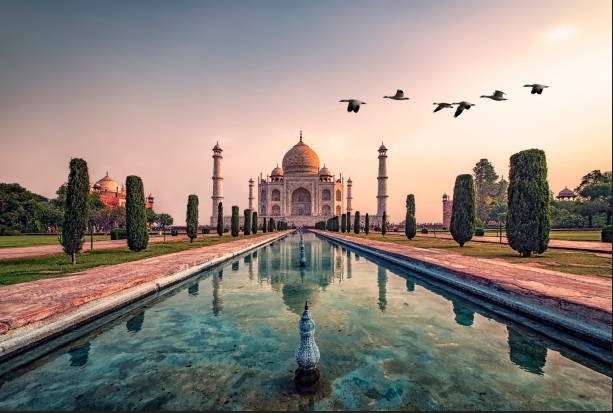
Output Image Cyan
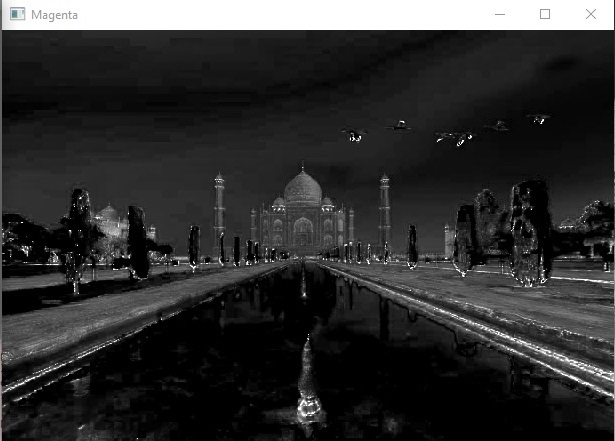
Output Image Magenta
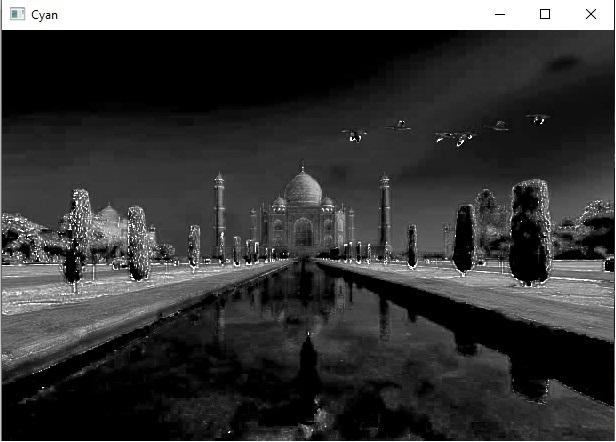
Output Image Yellow
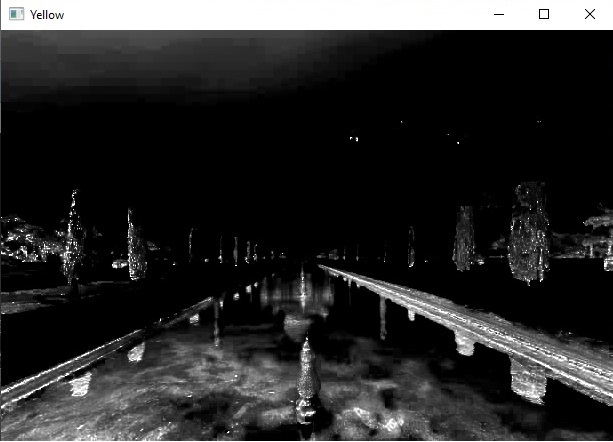
Output Image Key
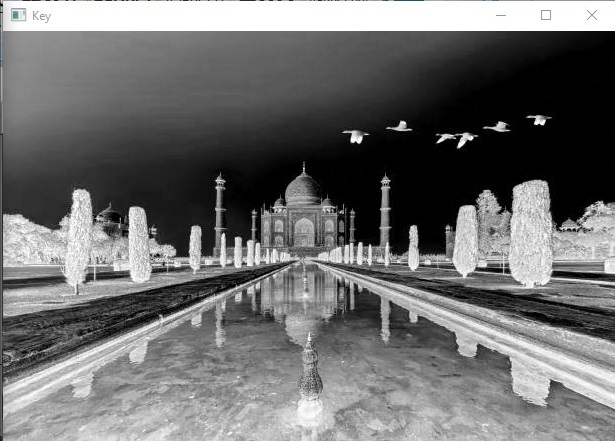
In the above example, the RGB image was converted into CMYK and split into four channels Cyan, Magenta, Yellow, and Key.

